Robust jaws and crushing bites allow sea otters to specialize their diets
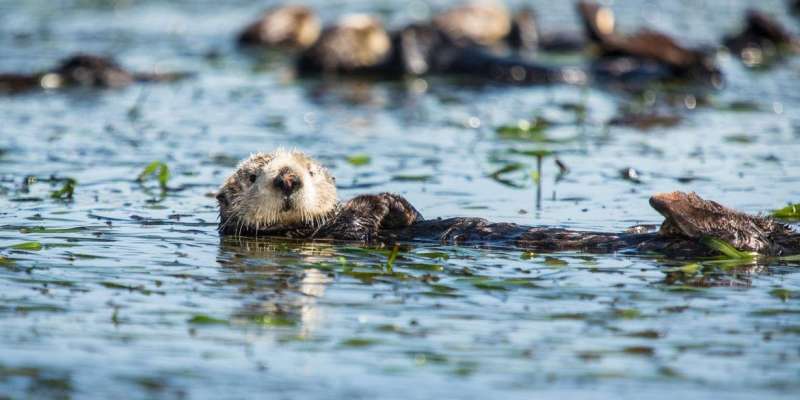
A sea otter's survival depends on their ability to catch and eat prey. Unlike most marine mammals, sea otters lack a thick layer of blubber to insulate them from the frigid waters of the Pacific Ocean. Instead, they rely on dense fur and a very active metabolism to keep warm.
Sea otters have a diverse diet, eating anything from clams to sea urchins to crabs. However, while sea otter diets are diverse at a population level, individual sea otters can have highly specialized diets.
This is especially true for the subspecies of sea otter living in the waters of southern California. Known as the southern sea otter, this subspecies lives in rocky environments where marine invertebrates are plentiful.
As the number of sea otters in a particular area grows, each sea otter must compete for food with its neighbor. To overcome this, individual southern sea otters start to specialize by eating specific prey species, alleviating the competition. In this way, southern sea otters act as diet specialists.
However, this behavior is not observed in northern sea otters, the subspecies that lives in Washington, British Columbia, and Alaska.
In these mixed-sediment marine environments, sea otters quickly deplete their favorite prey, like sea urchins, and are left to forage mostly on bivalves, such as clams and mussels. Therefore, in contrast to southern sea otters, northern sea otters act as generalists.
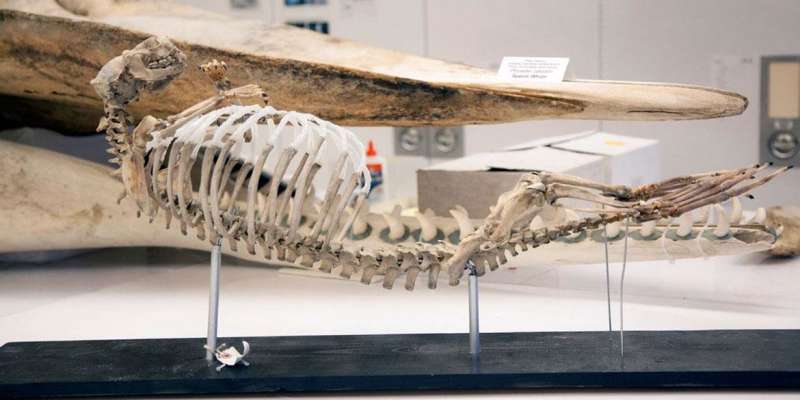
Why are northern and southern sea otters behaving differently?
While previous research has found that habitat type and the diversity and abundance of prey influence this behavior, little is known about whether a sea otter's anatomy and feeding performance plays a role in enhancing or restricting their ability to specialize on certain prey types.
Specialized behaviors, like feeding on specific food items, are often associated with specialized morphologies, like the size and shape of an animal's body or its skull.
Working with Dr. Sharlene Santana, curator of mammals at the Burke Museum, I set out to investigate whether differences in food-resource use in sea otters can be explained by differences in the size and shape of their skull and their ability to efficiently bite into prey.
I used more than 100 sea otter skulls from the Burke Museum's Mammalogy collection to create mathematical models that allowed us to compare bite force, jaw strength, and skull size and shape differences between northern and southern sea otters.
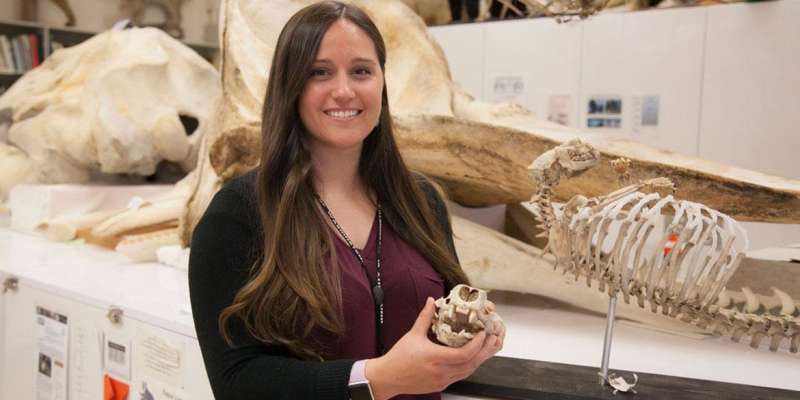
I photographed each skull (both the cranium and mandible) in three different views. Then, using these photographs, I estimated the size of the muscles used during biting and chewing to estimate the bite force of each individual sea otter.
To further investigate biting ability, I used digital calipers to measure specific dimensions of the lower jaw, which allowed me to estimate how strong and robust this bone is. Lastly, I used the skull photographs to compare the size and shape of sea otter skulls using a method known as geometric morphometrics.
Sea otters have highly specialized skulls and teeth that allow them to pierce through the tough exoskeletons of sea urchins, and pry open clams. We found that their short, blunt skulls and flat, fracture-resistant teeth allow them to generate high bite forces for their body size (nearly 80lbs of force!). These high bite forces allow them to eat otherwise hard-to-crack marine invertebrates.
Comparing the skulls of the two subspecies, we found subtle differences in skull size and shape between the northern and southern sea otters. However, these differences do not translate to significant differences in bite force.
This means that each subspecies has the potential to become a specialist or remain a generalist depending on prey availability, habitat characteristics, and competition. Southern sea otters specialize their diets, however, when conditions require.
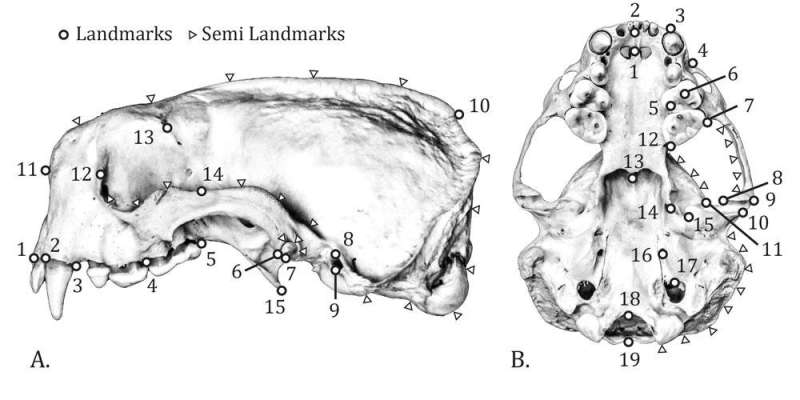
With these results in mind, we decided to look even deeper at potential differences within populations; that is, between male and female sea otters.
Male sea otters are larger than female sea otters; males on average weigh 90lbs while females weigh 40-60lbs. Therefore, we expected to also see this trend in skull size—and we did!
However male sea otters not only have larger skulls than females, but also have skull features that would allow them to have more forceful bites for their size, including larger crests and ridges that provide greater surface area for muscle attachment (more muscle equals stronger bites!). In addition, male sea otters have stronger, more robust lower jaws that allow them to crush the toughest of prey.
Our results suggest that male sea otters have the potential to consume harder, tougher prey than females just by virtue of their skull size and shape.
But do these differences between males and females give males the upper hand when feeding? Not necessarily. What females lack in size, they make up for with brains!
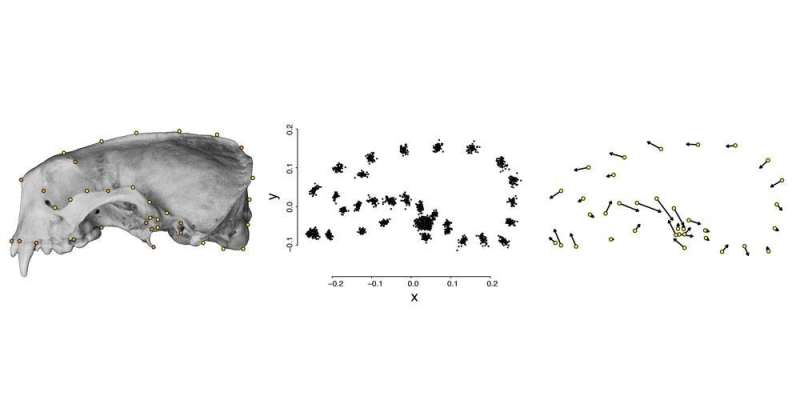
Female sea otters are more prone than males to use tools, like rocks and stones, to crack open tougher-than-usual prey, like clams. Some males also do this behavior, but their mothers likely taught them how to do it.
It is possible that males are larger and generate more powerful bites due to sexual selection, and not to have an advantage over females during feeding. Males fight vigorously with each other for territory and reproductive opportunities with females, and the biggest and strongest sea otter generally wins.
Sea otters are keystone species in coastal ecosystems, but sadly they are also endangered. A better understanding of their adaptations is critical for their conservation.
By using museum specimens, we were able to identify anatomical performance differences between and within sea otter populations. We have gained valuable insight into how their ability to produce forceful bites might allow them to act both as generalists or specialists depending on environmental conditions.
The study, "Do differences in skull morphology and bite performance explain dietary specialization in sea otters?" is published in the Journal of Mammalogy.
-
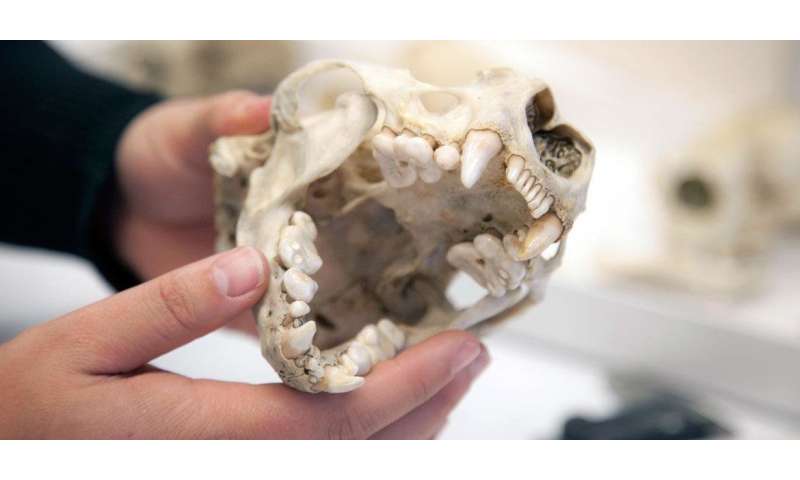
Sea otters have flat, fracture-resistant teeth and strong canines to crush and pry open hard-bodied marine invertebrates like crabs, urchins, and clams. Credit: Burke Museum -
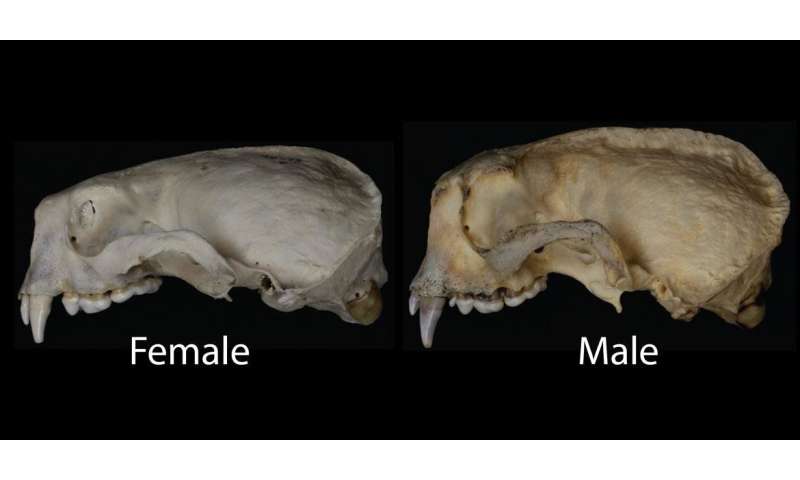
Male sea otter skulls are overall larger and more robust than females. Notice the large crests and ridges of the male skull. These features provide more area for muscle attachment and, in-turn, greater biting ability. Credit: Burke Museum
More information: Kristin M Campbell et al. Do differences in skull morphology and bite performance explain dietary specialization in sea otters?, Journal of Mammalogy (2017). DOI: 10.1093/jmammal/gyx091
Journal information: Journal of Mammalogy
Provided by Burke Museum


















